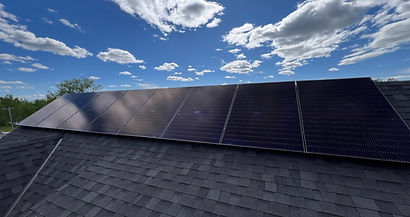Solar & Electrical Solutions For Cochrane & Calgary

Flat Roof Solar Installation

Ground Mount Solar Installation

Clean, Professional Solar Installations
We use high-quality stainless steel conduit and raintight fittings to ensure your solar installation not only performs well but also looks great. Unlike other installers, we don’t run exposed tech cable or PVC up the side of your home. Instead, we route conduit through the attic and connect from beneath the array—delivering a sleek, low-profile finish you’ll be proud of.
Fill out the form for a Free Solar Proposal!


Clean Energy Improvement Program
CEIP offers flexible financing to residential property owners to help with the upfront costs of energy efficiency and renewable energy upgrades. CEIP offers homeowners:
-
Financing for up to 100% of project costs.
-
Competitive interest rates (rate for 2024 is 3.25%)
-
Long repayment terms (up to 20 years).
-
The option to repay in full at any time without penalty.
-
An incentive of up to 10% of total project costs.
-
Repayment collected through your property tax bill.
Exclusive Solar Club Electricity Rates
Electricity rates designed for small solar micro-generators who are on a bi-directional cumulative meter.
Solar Club members can switch between these two rates at any time with just 10 days notice, penalty free to accommodate seasonal generation fluctuations.
Join Solar clubs and export to the grid at 33 ¢/kWh!
*Designed for solar micro-generators exporting more electricity to the grid than they are importing.
Join Solar Clubs
Increase Your ROI

